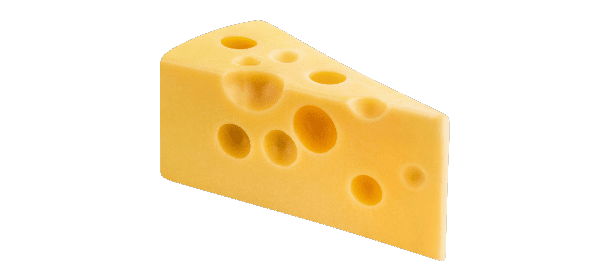Fun Facts
Welcome to our Fun Facts roundup.
Noticed Fun Facts around our site? They’re just one way we’re sprinkling positive vibes across everything we do. If you’re as food ingredient obsessed as we are, you’ll likely appreciate us putting them all in one place. Enjoy your fun foodie doom scroll.

Fun Facts
Bubblegum was created by accident when a 23 year old accountant (yes, an accountant) was experimenting and stumbled upon the formula. The iconic pink colour? It was the only food dye the factory had at that time.
Fun Facts
Our employee mascot? An avocado with arms and legs (and cool red shoes). His name is Glenn. And he’s based on one of our teammate’s tattoos. Glenn, in all his glory, is a symbol for letting our people fully be themselves.
Fun Facts
Xanthan Gum was initially derived from a strain of bacteria found on cabbage (yuck), but it has since become a food industry staple for its thickening and stabilizing properties.
Fun Facts
When you think of emulsion, you probably think water and oil. But in the case of the marshmallow, emulsion is between liquid and air, and then you need to stabilise it. So basically, marshmallows are fluffy food-science miracles.
Fun Facts
Thousands of years ago Gum Arabic, a popular ingredient in some of today’s fave treats, was used in ancient mummification processes.
Fun Facts
Cornstarch, a common thickening agent in cooking, was originally developed as a laundry starch in the 19th century.
Fun Facts
Pink peppercorns aren’t actually peppercorns. They’re called peppercorns because they’re similar in shape and flavour to their namesake — these bright, tiny balls are nothing more than a humble berry.
Fun Facts
Starch retrogradation is a natural process in which the starch molecules in bread and baked goods recrystallize over time, causing the bread to become staler. Hot tip: reheating stale bread can partially reverse this process, restoring some of its freshness.
Fun Facts
Xanthan gum is like magic in salad dressings. Thanks to its shear-thinning properties, it makes the dressing pour smoothly but then thickens to cling to your lettuce. Easy pouring and no-slide bites — thanks science!
Fun Facts
Adding special thickening agents turns plain old H2O into a lifesaver for folks with swallowing difficulties, making it easier and safer for them to drink.
Fun Facts
Pectin, the magical jelly maker in jams, was discovered by a French chemist. But it wasn’t until a pair of German scientists got a hold of it in 1908, that it was transformed into the culinary superstar we use today.
Fun Facts
One of the key flavourings in your classic Hot Dog? Paprika! Paprika was introduced to America by Spanish explorers in the 16th century. That means every bite of a hotdog carries a dash of a centuries-old spice adventure.
Fun Facts
The origins of food packaging can be traced back to prehistoric times. Early humans used materials such as sticks, stones, and clay to store food.
Fun Facts
Amylase transforms complex carbohydrates into simpler sugars. But did you know that your mouth comes equipped with its own amylase? It comes in the form of saliva, turning starchy foes into sweet allies.
Fun Facts
Stevia, a natural sweetener, is incredibly potent. It’s estimated to be up to 150 times sweeter than sugar, so a little goes a really really long way.
Fun Facts
Some amino acids, like proline and leucine, are part of the cheese’s inherent composition, contributing to its flavour profile without the need for additional flavouring or artificial enhancements.
Fun Facts
When Blendtek was established in 2014, we didn’t actually have any blending capabilities. But it was always part of the vision. Goals unlocked.
